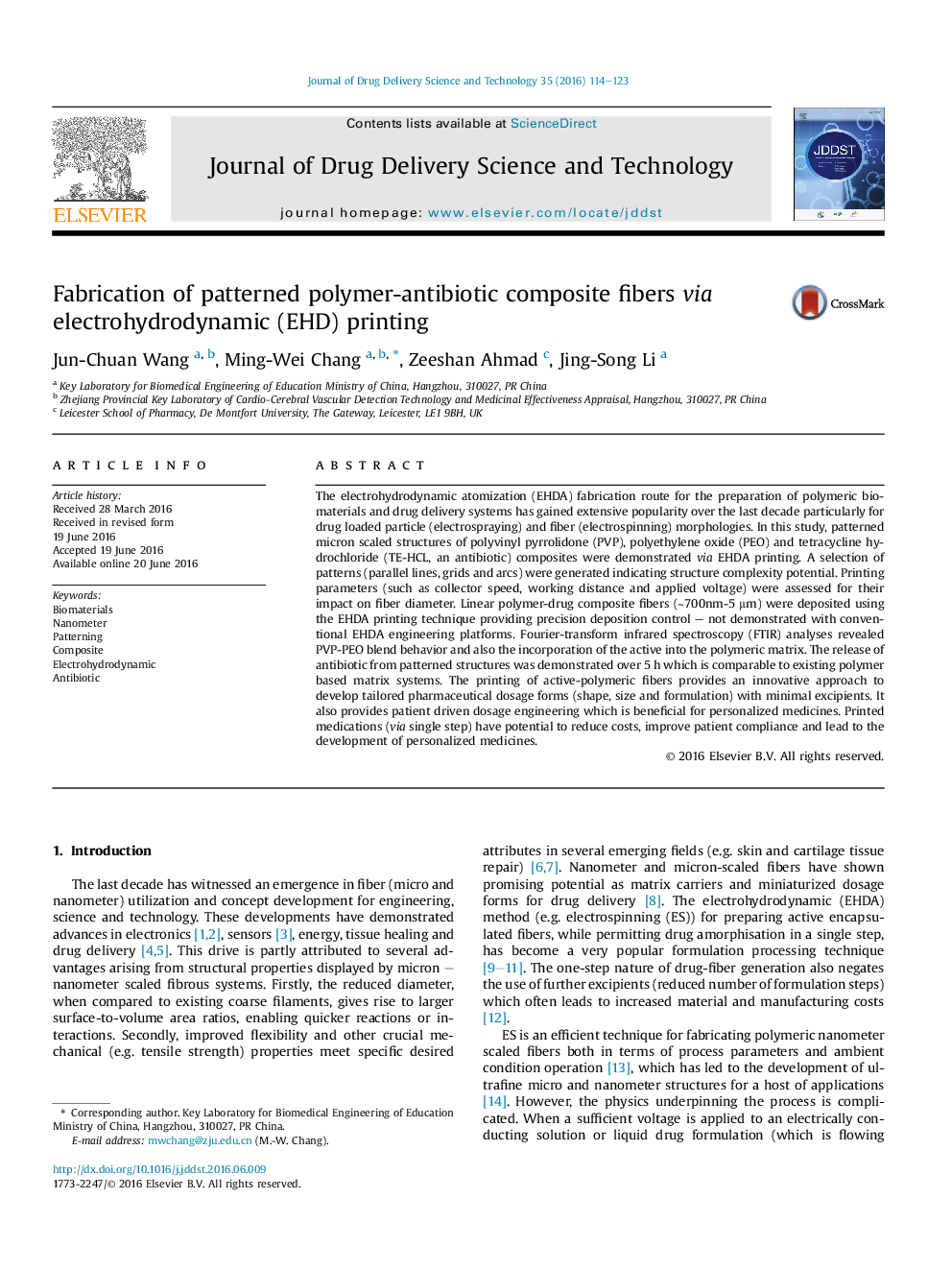| Article ID | Journal | Published Year | Pages | File Type |
|---|---|---|---|---|
| 2483000 | Journal of Drug Delivery Science and Technology | 2016 | 10 Pages |
The electrohydrodynamic atomization (EHDA) fabrication route for the preparation of polymeric biomaterials and drug delivery systems has gained extensive popularity over the last decade particularly for drug loaded particle (electrospraying) and fiber (electrospinning) morphologies. In this study, patterned micron scaled structures of polyvinyl pyrrolidone (PVP), polyethylene oxide (PEO) and tetracycline hydrochloride (TE-HCL, an antibiotic) composites were demonstrated via EHDA printing. A selection of patterns (parallel lines, grids and arcs) were generated indicating structure complexity potential. Printing parameters (such as collector speed, working distance and applied voltage) were assessed for their impact on fiber diameter. Linear polymer-drug composite fibers (∼700nm-5 μm) were deposited using the EHDA printing technique providing precision deposition control – not demonstrated with conventional EHDA engineering platforms. Fourier-transform infrared spectroscopy (FTIR) analyses revealed PVP-PEO blend behavior and also the incorporation of the active into the polymeric matrix. The release of antibiotic from patterned structures was demonstrated over 5 h which is comparable to existing polymer based matrix systems. The printing of active-polymeric fibers provides an innovative approach to develop tailored pharmaceutical dosage forms (shape, size and formulation) with minimal excipients. It also provides patient driven dosage engineering which is beneficial for personalized medicines. Printed medications (via single step) have potential to reduce costs, improve patient compliance and lead to the development of personalized medicines.
Graphical abstractFigure optionsDownload full-size imageDownload as PowerPoint slide
